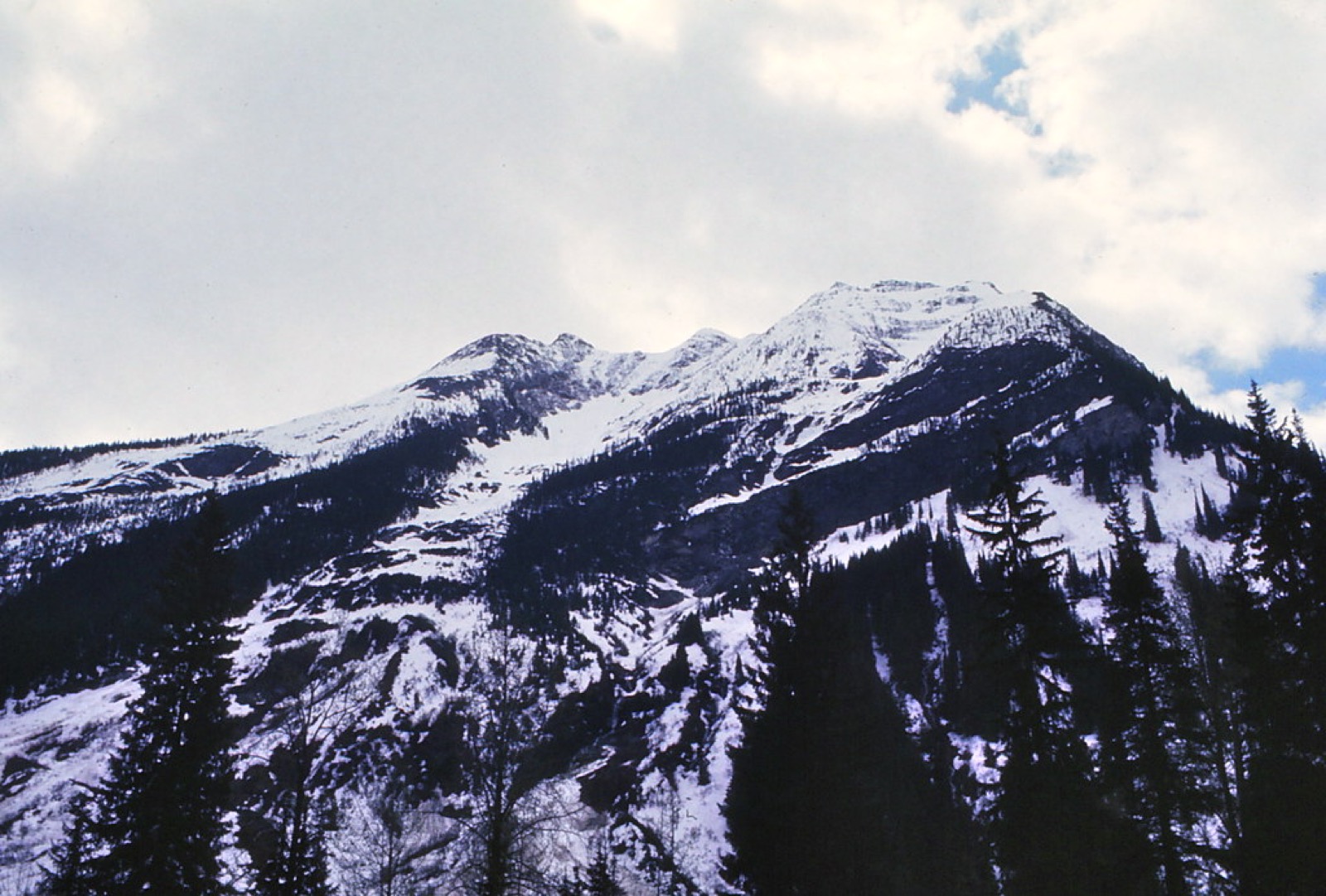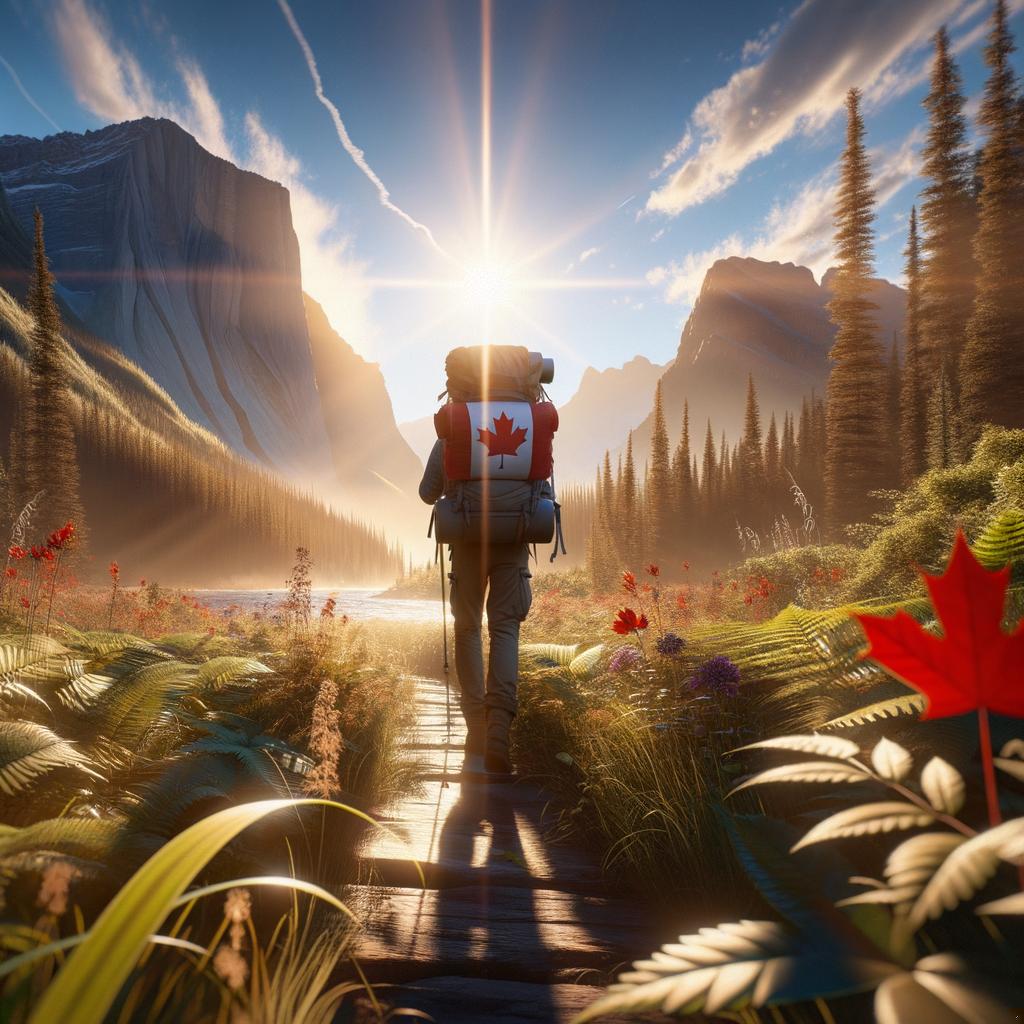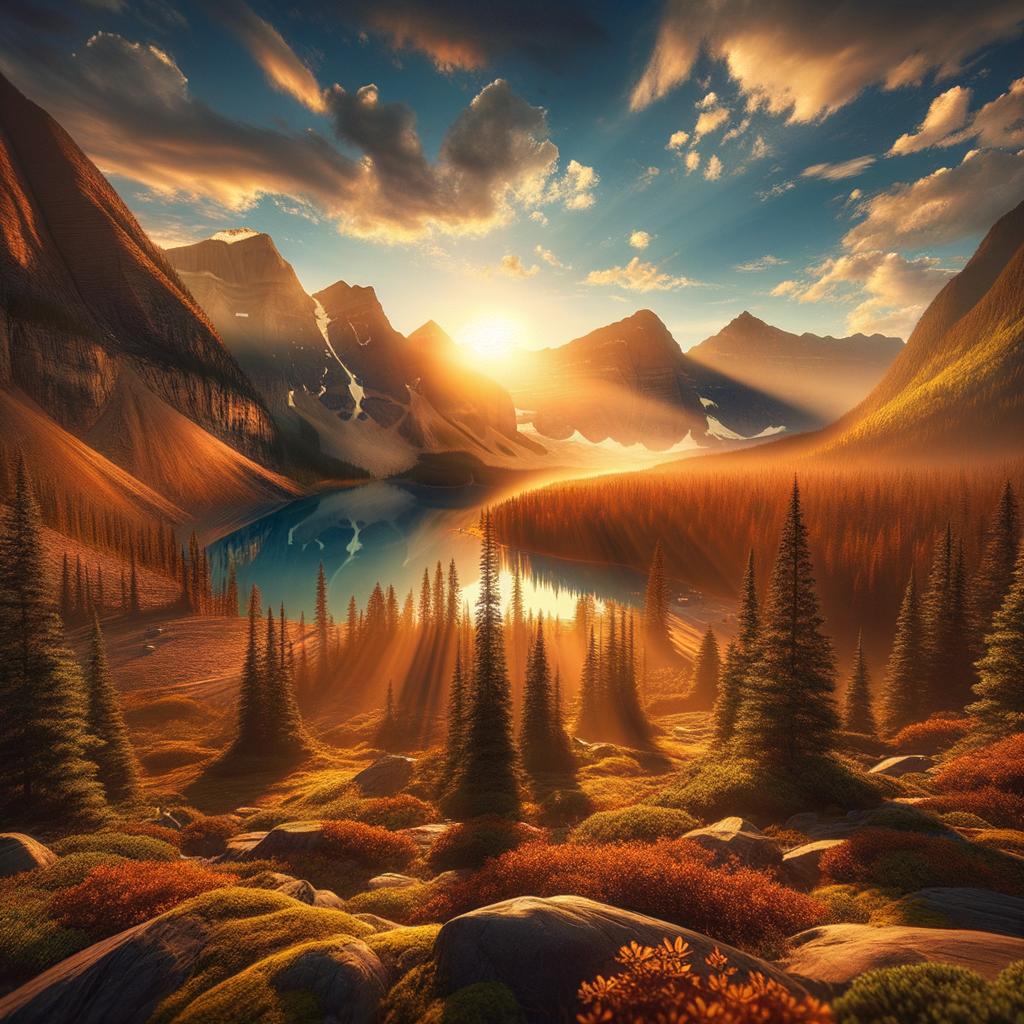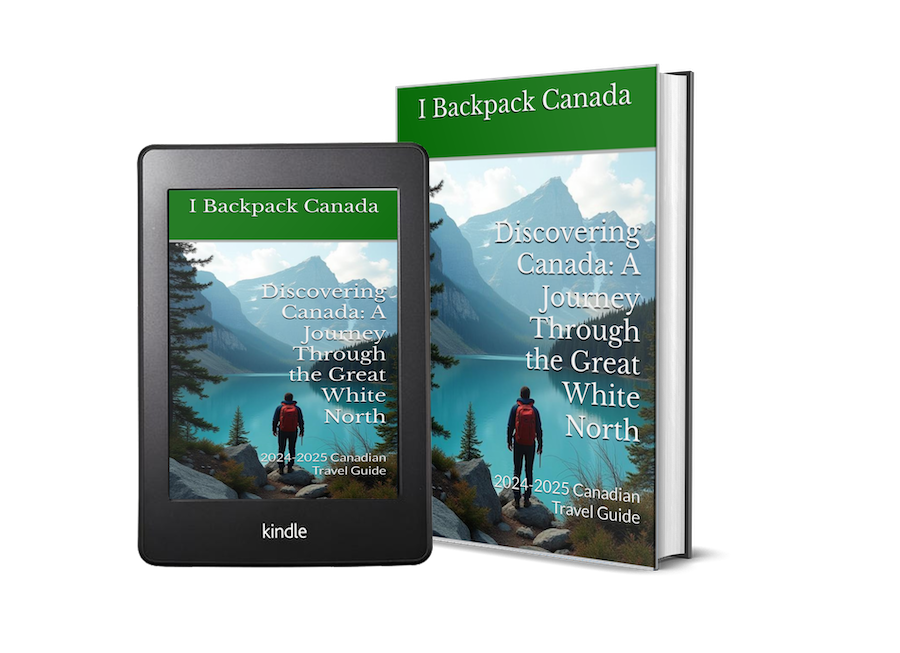The Complete Guide To National Parks in Canada
Posted on August 16, 2016 • 22 minutes • 4650 words
Table of contents
- Map of National Parks In Canada
- Glacier National Park, British Columbia
- Yoho National Park, British Columbia
- Mount Revelstoke National Park, British Columbia
- Kootenay National Park, British Columbia
- Pacific Rim (Reserve) National Park, British Columbia
- Gwaii Haanas (Reserve) National Park, British Columbia
- Gulf Islands (Reserve) National Park, British Columbia
- Banff National Park, Alberta
- Waterton Lakes National Park, Alberta
- Jasper National Park, Alberta
- Elk Island National Park, Alberta
- Prince Albert National Park, Saskatchewan
- Grasslands National Park, Saskatchewan
- Riding Mountain National Park, Manitoba
- Wapusk National Park, Manitoba
- Point Pelee National Park, Ontario
- Georgian Bay Islands National Park, Ontario
- Pukaskwa National Park, Ontario
- Bruce Peninsula National Park, Ontario
- Thousand Islands National Park, Ontario
- Forillon National Park, Quebec
- La Mauricie National Park, Quebec
- Mingan Archipelago (Reserve) National Park, Quebec
- Fundy National Park, New Brunswick
- Kouchibouguac National Park, New Brunswick
- Cape Breton Highlands National Park, Nova Scotia
- Kejimkujik National Park, Nova Scotia
- Sable Island (Reserve) National Park, Nova Scotia
- Prince Edward Island National Park, Prince Edward Island
- Gros Morne National Park, Newfoundland and Labrador
- Terra Nova National Park, Newfoundland and Labrador
- Torngat Mountains National Park, Newfoundland and Labrador
- Kluane (two units: a Park and a Reserve) National Park, Yukon
- Ivvavik National Park, Yukon
- Vuntut National Park, Yukon
- Nahanni (Reserve) National Park, Northwest Territories
- Aulavik National Park, Northwest Territories
- Tuktut Nogait National Park, Northwest Territories
- Naats’ihch’oh (Reserve) National Park, Northwest Territories
- Wood Buffalo Alberta National Park, Northwest Territories
- Auyuittuq National Park, Nunavut
- Quttinirpaaq National Park, Nunavut
- Sirmilik National Park, Nunavut
- Ukkusiksalik National Park, Nunavut
- Qausuittuq National Park, Nunavut
Canada is filled with national parks and each one is unique in its own way. Some of the parks are more popular than others and there are a couple that hardly ever see any visitors. However, people should really consider trying to see all of the national parks in order to really appreciate the beauty of the entire country.
Map of National Parks In Canada
Browse this complete Map of all National Parks & Reserves in Canada. Click a Red Marker and click “View Details” to jump to the specified National Park.. [mappress mapid=“126”] <img alt="Canada - Glacier National Park, BC - May 1976" src="/images/blog/8206763861_5905ec5290_b.jpg">
Glacier National Park, British Columbia
Area: 1,349 km2 (521 sq mi) Established: 1886 Visitors at Glacier National Park can climb the trails on the mountains before walking through meadows filled with boulders. One of the most popular sights inside the park is the Rogers Pass National Historic Site. Rogers Pass is a narrow valley that is surrounded by mountains and it is well known for the amount of snow it gets every winter. Visitors will also enjoy exploring the stone ruins that are located at Glacier House. <img alt="Emerald Lake, Yoho NP British Columbia Canada" src="/images/blog/5988280349_59d4d5e6cc_b.jpg">
Yoho National Park, British Columbia
Area: 1,313 km2 (507 sq mi) Established: 1886 The vertical rock walls, waterfalls and extremely high peaks bring many visitors to Yoho National Park. Hikers and other visitors will discover the secrets of ancient ocean life along with the power of ice and water. Visitors can watch trains pass through the Spiral Tunnels and walk along the Walk in the Past Trail that’s 1.2km long. There are even guided tours of the Shale Fossil Beds that are found within the park. <img alt="Giant Cedars Boardwalk Trail" src="/images/blog/14836530094_b828c05a89_b.jpg">
Mount Revelstoke National Park, British Columbia
Area: 260 km2 (100 sq mi) Established: 1914 Inside Mount Revelstoke National Park is a rainforest that people can walk through in order to stay cool on a hot summer day. Visitors can also stargaze from the top of a 2,000 meter high mountain at night. It is also possible to summit a mountain just a few short steps from a parking lot at this park. The park protects the mountain caribou and is also home to grizzly bears and mountain goats. Mount Revelstoke is widely known for skiing and the best natural jumps in the world can be found inside the park. <img alt="Floe Lake, Kootenay National Park 241" src="/images/blog/4853365415_0ddc127848_b.jpg">
Kootenay National Park, British Columbia
Area: 1,406 km2 (543 sq mi) Established: 1920 Kootenay National Park has icy mountain rivers and hot springs which makes it a unique place to visit at any time of the year. Visitors can spend time exploring canyons, seeing spectacular waterfalls and hiking the backcountry trails. Many people will visit the Burgess Shale in order to see fossils that are hundreds of years old. <img alt="Stream cutting though beach, breakers in the distance" src="/images/blog/5201866533_203021bbcf_b.jpg">
Pacific Rim (Reserve) National Park, British Columbia
Area: 511 km2 (197 sq mi) Established: 1970 Visitors at Pacific Rim can walk along sandy beaches during the summer and watch winter breakers come ashore to the rocky shoreline during the winter months. The park is located along the west coast of Vancouver Island where people can try surfing Canadian style. More adventurous people will want to try to walk or run the 9.5km Long Beach Challenge Route along the coast. Everyone who visits the area will find that they are immersing themselves into the Nuu-chah-nulth culture with interactive walks, storytelling and displays. <img alt="Gwaii Haanas National Park" src="/images/blog/26944859944_296254e121_b.jpg">
Gwaii Haanas (Reserve) National Park, British Columbia
Area: 1,495 km2 (577 sq mi) Established: 1988 Gwaii Haanas National Park is filled with ancient carved poles of the Haida people as well as fallen longhouses. The park is located on 1,884 islands and islets and is filled with culture and history. People can watch bald eagles fly above the park and they can also see bears, porpoises, sea lions and whales. The Gwaii Haanas Legacy Pole is 42 feet high and was carved to honor the 20th anniversary of the Gwaii Haanas Agreement. <img alt="Gulf Islands National Park Reserve" src="/images/blog/7846568748_81affc4dd1_b.jpg">
Gulf Islands (Reserve) National Park, British Columbia
Area: 36 km2 (14 sq mi) Established: 2003 The Gulf Islands National Park Reserve is located within the 15 Gulf Islands and visitors will enjoy the warm climate and amazing scenery. People can see watch seals, otters, orcas and porpoises in the water, whether from a kayak, boat or the shore. There are multiple trails that lead to the mountaintops and lighthouses. This area is where First Nations people have lived for thousands of years and there are many sites where people can learn about the history and culture of these people. <img alt="Alone In The Woods" src="https://c6.staticflickr.com/4/3341/3345094789_e4ca8ff290_b.jpg">
Banff National Park, Alberta
Area: 6,641 km2 (2,564 sq mi) Established: 1885 Banff National Park was Canada’s first national park and it was founded in the fall of 1883 when three men found a cave with hot springs in Alberta’s Rocky Mountains. The park is 2,564 square miles of beautiful valleys, mountains, glaciers, meadows and rivers. This national park is much more than beautiful scenery and visitors are guaranteed to see a lot of wildlife including bighorn sheep and bears. There are 15 campgrounds inside the park and some of the popular things that visitors like to do include hiking, skiing, fishing and waterfall ice climbing. Plus, no trip to Banff National Park is complete without a stop at one of the hot springs. <img alt="Upper Waterton Lakes at Sunset" src="/images/blog/15371137326_d47b13a336_b.jpg">
Waterton Lakes National Park, Alberta
Area: 505 km2 (195 sq mi) Established: 1895 Waterton Lakes National Park is filled with gorgeous lakes, roaring waterfalls and extraordinary views. This is one of the few parks that have ecosystems from the north, south, east and west in one place. Most of the visitors at the park enjoy hiking, no matter what the season. There are many educational programs and services available for all visitors too. <img alt="Beauvert Lake" src="/images/blog/15563489072_1615fbf67d_b.jpg">
Jasper National Park, Alberta
Area: 10,878 km2 (4,200 sq mi) Established: 1907 Approximately 97% of the park’s 11,000 square kilometers is protected wilderness however there are many multi-use trails for people to explore. Every visitor will be amazed at the amount of wildlife they see while they are climbing the mountain peaks or biking along the lakes and beaches. Most of the time people will see elk, moose, mountain sheep and bears throughout the park. There is a lot of backcountry camping available and many people like to take a drive along the Icefields Parkway. <img alt="Elk Island and Edmonton 472 copy" src="/images/blog/7251093616_b3bac7ccdd_b.jpg">
Elk Island National Park, Alberta
Area: 194 km2 (75 sq mi) Established: 1913 Visitors to Elk Island National Park are able to tour a bison handling facility in order to see how bison were brought back from near extinction while at Elk Island National Park. An entire trip to the park can be spent celebrating the culture of the bison. There is even a chance that visitors will be stopped, as they are driving their car through the park, by a herd of bison blocking the roadways. 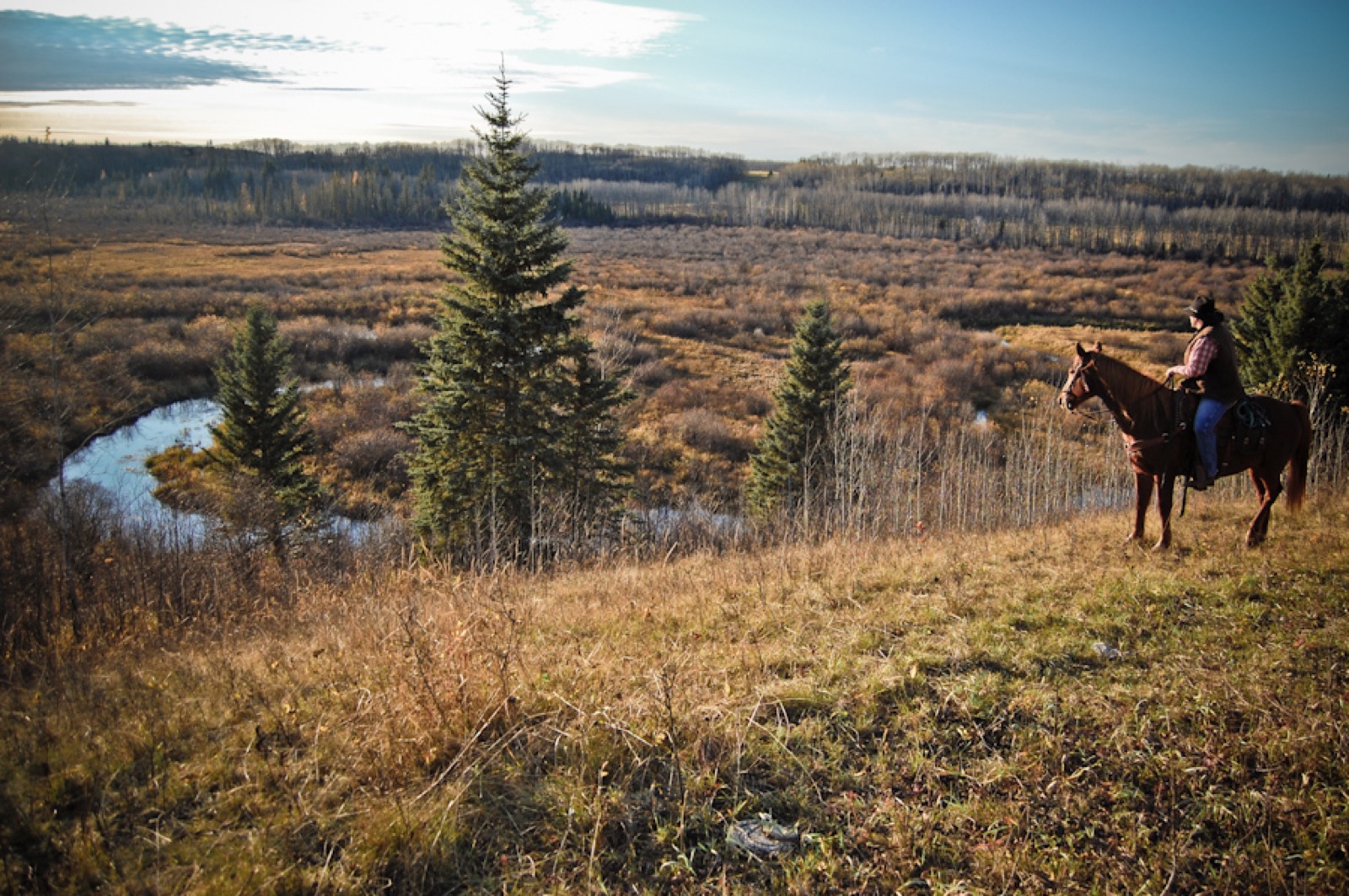
Prince Albert National Park, Saskatchewan
Area: 3,874 km2 (1,496 sq mi) Established: 1927 There is plenty of water available in the Prince Albert National Park, so everyone can canoe to remote lakes, water ski and wakeboard. There are six beaches where people can have fun in the water and the sun. While hiking through the backcountry, people have the opportunity to see some wild bison. The only fully protected white pelican nesting colony in Canada is located inside the park. 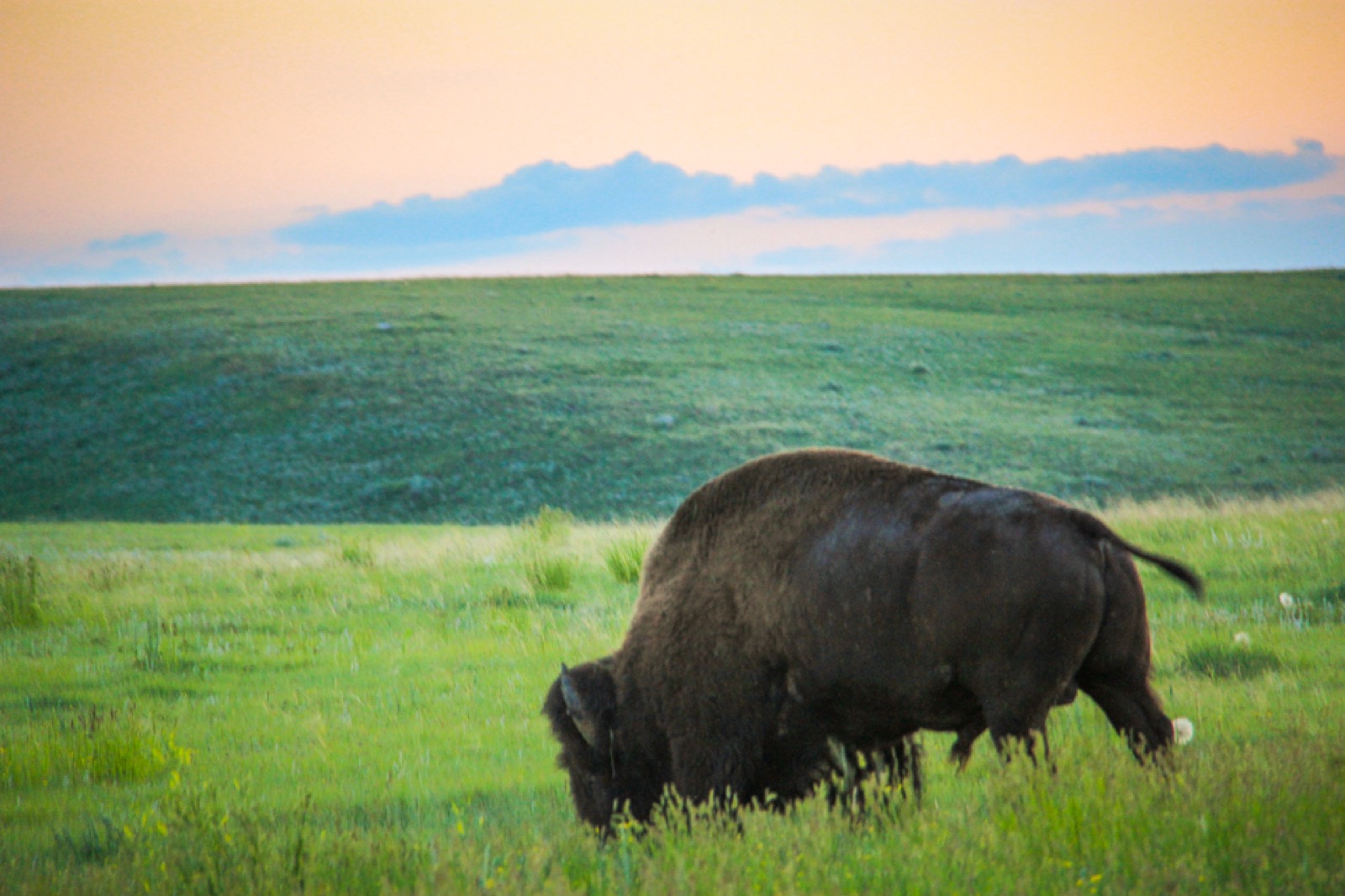
Grasslands National Park, Saskatchewan
Area: 907 km2 (350 sq mi) Established: 1981 Visitors can look at dinosaur bones, walk past tipi rings and see prairie homesteads while visiting Grasslands National Park. The area consists of wide open plains of grass and people can ride on traditional wagons through the plains. Everyone can participate in the seasonal events including guided wagon rides, lassoing practice at a historic ranch and fireside chats. There are even genuine hoedowns that people can go to. The park has many trails to hike and everyone can find the perfect one for their group. The hikes vary from family friendly interpretive walks to more adventurous and remote backcountry hikes. <img alt="Riding Mountain National Park sunset." src="/images/blog/26730354682_634c802a20_b.jpg">
Riding Mountain National Park, Manitoba
Area: 2,973 km2 (1,148 sq mi) Established: 1933 Riding Mountain National Park is filled with prairies and the sandy beach of Clear Lake. This park is filled with wolves, moose, elk, black bear, numerous birds and bison. Every year there is an outdoor concert that is held at the beach at Clear Lake. Everyone spends the day dancing to the music and having fun. At night, people even have the chance to see the Northern Lights in the clear skies. <img alt="Fedora and her cub" src="/images/blog/6376547399_30ca9480d4_b.jpg">
Wapusk National Park, Manitoba
Area: 11,475 km2 (4,431 sq mi) Established: 1996 The Wapusk National park is a subarctic remote area that is 11,475 square kilometers large. This park has one of the largest polar bear maternity denning areas in the entire world. During certain times of the year, people can see large numbers of polar bears at Cape Churchill. Visitors can also see arctic foxes, arctic hares, wolves, caribou and wolverines. Two of the National Historic Sites inside the park are the two settlements that Aboriginal people established near Prince of Wales Fort and York Factory. <img alt="Marsh Boardwalk, Point Pelee National Park, Leamington, Ontario, Canada" src="/images/blog/21586246990_38e7741520_b.jpg">
Point Pelee National Park, Ontario
Area: 15 km2 (6 sq mi) Established: 1918 Point Pelee National Park is at the southern tip of Canada and the sounds and wildlife change with the seasons. In the spring, people will see song birds migrating and the cicadas hum in the summer. The Monarch butterflies fly around in the fall and during the winter everything reflects off of the snow. The park is the smallest of Canada’s national parks and approximately 300,000 people visit it every year. Two of the popular vistas that people visit in the park are the Tip and the Marsh Boardwalk. There are 70 different species of trees that can be found inside the park and visitors can walk along the Botham Tree Trail to see all of them. <img alt="Georgian Bay" src="/images/blog/17987823653_c2c9c17fba_b.jpg">
Georgian Bay Islands National Park, Ontario
Area: 14 km2 (5 sq mi) Established: 1929 The Georgian Islands National Park is in the world’s largest freshest archipelago in a nature preserve. The park inspired the Group of Seven, a group of landscape painters, in their paintings between 1920 and 1933. Many people cycle through the wooded trails or hike them to reach points where they can enjoy panoramic views of the land below <img alt="The Trail" src="/images/blog/3361840064_e845f4b984_b.jpg">
Pukaskwa National Park, Ontario
Area: 1,878 km2 (725 sq mi) Established: 1978 The Pukaskwa National Park is the only wilderness national park in Ontario County. The 1,878 square kilometers of the park includes the boreal forest and the shores of Lake Superior. Visitors are able to go geo-caching, walk over the White River Suspension Bridge, play on the shores at Horseshoe Beach and learn about the Ojibway on the Bimose Kinoomagewnan Trail. <img alt="Bruce Peninsula National Park" src="/images/blog/4887702149_935ee94bfe_b.jpg">
Bruce Peninsula National Park, Ontario
Area: 154 km2 (59 sq mi) Established: 1987 The Bruce Peninsula National Park is located on Georgian Bay and enormous cliffs rise above the water. There are ancient cedar trees along the cliffs and black bears and reptiles can be found inside the forest. The park is part of the Dark Sky Preserve, so people can see the stars in their truest and brightest form. Visitors can go on guided tours on the coastline and swim in the water at Singing Sands Beach. <img alt="Thousand Islands 2.JPG" src="/images/blog/1200px-Thousand_Islands_2.JPG"> By Ad Meskens - Own work, CC BY-SA 3.0 , https://commons.wikimedia.org/w/index.php?curid=7924313
Thousand Islands National Park, Ontario
Area: 24 km2 (9 sq mi) Established: 1904 Thousand Islands National Park has granite islands that are filled with pine trees, rare turtles and birds. Many visitors will want to explore many of the lesser known bays by either kayak or boat and see the historic estates on the shoreline. The visitor’s center at the park has programs, exhibits and activities for everyone who visits the park. Hiking each of the trails in the park can take anywhere from 20 minutes to 2 hours and they vary in difficulty. <img alt="Parc national du Canada Forillon" src="/images/blog/2992415392_b1cc62ce40_b.jpg">
Forillon National Park, Quebec
Area: 244 km2 (94 sq mi) Established: 1970 Forillon National Park is the perfect place to enjoy a walk along the beach, climb the cliffs over the water and hike through the forest looking for wildlife. The park is on the end of the Gaspe Peninsula and it borders the Gulf of St. Lawrence and the Bay of Gaspe. Visitors can go snorkeling and then sit and watch the seals play. Anyone who wants an extraordinary experience will want to hike the Land’s End Trail which is similar to the Appalachian Trail. This trail can be done by foot or by bicycle and it is possible to see marine life from the trail. <img alt="Parc de la Mauricie" src="/images/blog/4331529074_f625ef8dfd_b.jpg">
La Mauricie National Park, Quebec
Area: 536 km2 (207 sq mi) Established: 1970 There are over 150 lakes in the La Mauricie National Park and many people like to swim under the waterfalls at many of the lakes. There are many activities at the park including canoe camping, hiking, mountain biking, fishing and road cycling. <img alt="Quarry Island - Mingan Archipelago" src="/images/blog/6104765609_2085b564e5_b.jpg">
Mingan Archipelago (Reserve) National Park, Quebec
Area: 151 km2 (58 sq mi) Established: 1984 The Mingan Archipelago National Park Reserve is located along the north shore of the Gulf of St. Lawrence. It is comprised of 30 limestone islands and over 1,000 granite islets and reefs. Everyone who visits the area will be able to see a variety of plants, seabirds, seals, dolphins and whales. This national park is one of the best places to get phenomenal pictures while hiking and exploring the islands. Visitors can go from island to island easily by boat. <img alt="Fundy National Park" src="/images/blog/18875195381_3f7316e958_b.jpg">
Fundy National Park, New Brunswick
Area: 206 km2 (80 sq mi) Established: 1948 There are many deluxe campgrounds within Fundy National Park where people can become immersed in Atlantic Canada cultures. Visitors can walk on the sea floor during low tide and they can also experience some of the highest tides in the entire world. Many of the trails inside the park lead deep into the Acadian forests where people will see quite a few waterfalls. There are many annual festivals at the park that feature Atlantic Canada’s music and culture. <img alt="Sentier Micmac" src="/images/blog/5365293183_dd0dbdc436_b.jpg">
Kouchibouguac National Park, New Brunswick
Area: 239 km2 (92 sq mi) Established: 1969 Kouchibouguac National Park has a great combination of forests, salt marshes and beaches with warm water. The Kouchibouguac National Park is part of the Dark Sky Preserves which was established to reduce artificial light glare, increase the visibility of the nighttime sky and reduce energy consumption. Since the park is part of the Dark Sky Preserves they have multiple programs on astronomy and other nighttime themes. Besides the nighttime activities, visitors can also enjoy canoeing through a grey seal colony during the day and cycle along 60km of trails throughout the park. Visitors can also learn a lot about the centuries old Mi’kmaq culture inside an interpretive wigwam. <img alt="Cabot Trail, Cape Breton" src="/images/blog/7618577730_fa60bd1a32_b.jpg">
Cape Breton Highlands National Park, Nova Scotia
Area: 949 km2 (366 sq mi) Established: 1936 Cape Breton Highlands National Park is an incredible place where the mountains and sea meet together. There are 26 hiking trails available, plus cycling, kayaking, camping, golfing and fishing. People can swim in the ocean at the sandy beaches and visit the fishing villages at the edge of the park. Visitors will want to walk along the infamous Cabot Trail coastline to see the river canyons, the ancient plateau and the cliffs. Minke and pilot whales can be seen in both the Atlantic and the Gulf of St. Lawrence. One of the best times to hike is at the end of the day, so that people can experience the magnificent sunset. <img alt="Kejimkujik Seaside National Park 10" src="/images/blog/4802543427_9ceea5946f_b.jpg">
Kejimkujik National Park, Nova Scotia
Area: 404 km2 (156 sq mi) Established: 1968 At Kejimkujik National Park, the land tells the story of the Mi’kmaw which is carved in stone. Inland at the park, people can see hemlock, sugar maple and yellow aspen trees that surround the lakes and the quartzite shores. People can hike the trails and paddle the waters while exploring the area. Many of the trails and waterways connect so that people can see as much of the park as possible. [caption id=“attachment_7954” align=“aligncenter” width=“800”]<img alt="Attribution: Parks Canada / Paul Illsley" src="/images/blog/sable-island-national-park.jpg"> Attribution: Parks Canada / Paul Illsley[/caption]
Sable Island (Reserve) National Park, Nova Scotia
Area: 34 km2 (13 sq mi) Established: 2013 Sable Island National Park Reserve is located on Sable Island in the North Atlantic. The island is remote and it is one of Canada’s furthest offshore islands. The wild horses run wild on the island inside the park and grey seals use the beaches as a breeding colony. Some of the plants, birds and insects in the park cannot be found anywhere else in the world. There have been hundreds of shipwrecks near the island over the years. This is a wonderful place to enjoy peace and quiet without interruptions. <img alt="Greenwich, PEI National Park" src="/images/blog/7618383946_b654ef7da2_b.jpg">
Prince Edward Island National Park, Prince Edward Island
Area: 22 km2 (8 sq mi) Established: 1937 There is plenty of water available in the Prince Albert National Park, so everyone can canoe to remote lakes, water ski and wakeboard. There are six beaches where people can have fun in the water and the sun. While hiking through the backcountry, people have the opportunity to see some wild bison. The only fully protected white pelican nesting colony in Canada is located inside the park. <img alt="imgp2951.jpg" src="/images/blog/3699916228_ce2d397e9f_b.jpg">
Gros Morne National Park, Newfoundland and Labrador
Area: 1,805 km2 (697 sq mi) Established: 1973 Gros Morne National Park is a UNESCO World Heritage Site because of the ancient landscapes and glaciers. Visitors can walk along coastal pathways and walk the gorge of Western Brook Pond. The culture of the seaside fishing villages is a learning experience for everyone. Hiking and backcountry tours are the most popular attractions inside Gros Morne National Park. <img alt="terra nova national park" src="/images/blog/6107573723_7bbd40bd04_b.jpg">
Terra Nova National Park, Newfoundland and Labrador
Area: 400 km2 (154 sq mi) Established: 1957 Terra Nova National Park is the eastern most national park and many people cannot decide whether they enjoy the land or the sea more while they are there. People inside the park are never more than 5km from the ocean. As people hike through the forests they are amazed with all of the beauty and cultural secrets. There is a lot of wildlife inside the park including black bears, lynx, ospreys, moose and the Newfoundland marten. Visitors can interact with marine animals at the touch tank and watch open air theater productions too. <img alt="labrador-torngat-mountains-national-park-1-eps" src="https://c2.staticflickr.com/2/1599/25661999745_d31e02df59_b.jpg">
Torngat Mountains National Park, Newfoundland and Labrador
Area: 9,700 km2 (3,745 sq mi) Established: 2008 Torngat Mountains National Park has been home to the Inuit for thousands of years. The Inuit still use this area for hunting, fishing and traveling. The park is 9,700 square kilometers that goes from Saglek Fjord in the south to the northern parts of Labrador as well as the boundary of Quebec in the west and the Labrador Sea in the east. The tops of the mountains are capped with glaciers and people can see polar bears, seals and caribou as they are exploring the area. Besides camping and hiking, people can sail along the coast and into the fjords and learn more about the culture of the area. <img alt="Auriol trail, Kluane" src="/images/blog/4512648419_df31eff81c_b.jpg">
Kluane (two units: a Park and a Reserve) National Park, Yukon
Area: 22,013 km2 (8,499 sq mi) Established: 1976 (Reserve) 1993 (Park) The Kluane National Park and Reserve is an extreme place to visit. Canada’s highest peak, Mount Logan, can be found at this park. Mount Logan is 5,959 meters high. At least half of the land in the park is covered with snow and ice. Many people will visit this park to traverse the alpine passes and ride past glaciers on a raft. <img alt="Canada–yukon–ivvavik-np–spe 3021.jpg" src="https://upload.wikimedia.org/wikipedia/commons/a/a9/Canada--yukon--ivvavik-np--spe_3021.jpg"> By Steyr - http://www.happytellus.com/gallery.php?img_id=3021 , CC BY-SA 3.0 , https://commons.wikimedia.org/w/index.php?curid=25534103
Ivvavik National Park, Yukon
Area: 10,168 km2 (3,926 sq mi) Established: 1984 The Ivvavik National Park was the first park to be created after an aboriginal land claim agreement was reached. The park represents the Northern Yukon and Mackenzie Delta natural regions and protects the calving grounds of the porcupine caribou. Visitors can raft though many slot canyons and mountain valleys all of the way to the Arctic Ocean. There are many trips that include time at base camps where people can fish, hike and have other adventures in the park. <img alt="Vontut National Park.jpg" src="/images/blog/1200px-Vontut_National_Park.jpg"> By wikipedia user Chris Kyrzyk , CC BY-SA 3.0 , https://commons.wikimedia.org/w/index.php?curid=6657235
Vuntut National Park, Yukon
Area: 4,345 km2 (1,678 sq mi) Established: 1995 The Vuntut National Park is a remote area of wilderness where many animals migrate to every year. Anyone who does venture into the park can see ancient campsites and prehistoric fossils as they are hiking through the countryside. There are a few people that live in the area in an isolated northern village and people can stop in and learn more about their culture. <img alt="Cirque of the Unclimbables" src="/images/blog/9945109673_0d41388c36_b.jpg">
Nahanni (Reserve) National Park, Northwest Territories
Area: 30,000 km2 (11,583 sq mi) Established: 1976 One of the features of the Nahanni National Park Reserve is the South Nahanni River. This river is infamous for whitewater rafting and people can also explore the canyons that are located near the river. At Nailicho, the river plunges down into a tremendous plume. There is a visitor center that has displays about the history, culture and geography of the area. One of the best hikes in the park leads to the Lotus Flower Tower. <img alt="AntarcticaDomeCSnow.jpg" src="/images/blog/AntarcticaDomeCSnow.jpg"> By Stephen Hudson - Own work, CC BY 2.5 , https://commons.wikimedia.org/w/index.php?curid=1557321
Aulavik National Park, Northwest Territories
Area: 12,200 km2 (4,710 sq mi) Established: 1992 The word Aulavik means place where people travel in Inuvialuktun and this could not be truer than in the area of Aulavik National Park. The park is over 12,000 square kilometers that is located on the north end of Banks Island. The park consists of valleys, deserts, buttes, badlands, hills and the coast. Visitors can see the endangered Peary caribou and muskoxen while they are exploring the park. There are no marked trails inside the park but it is easy to walk through any area. Paddling is an experience for visitors at the park on the Thomsen River. [caption id=“attachment_7952” align=“aligncenter” width=“1382”]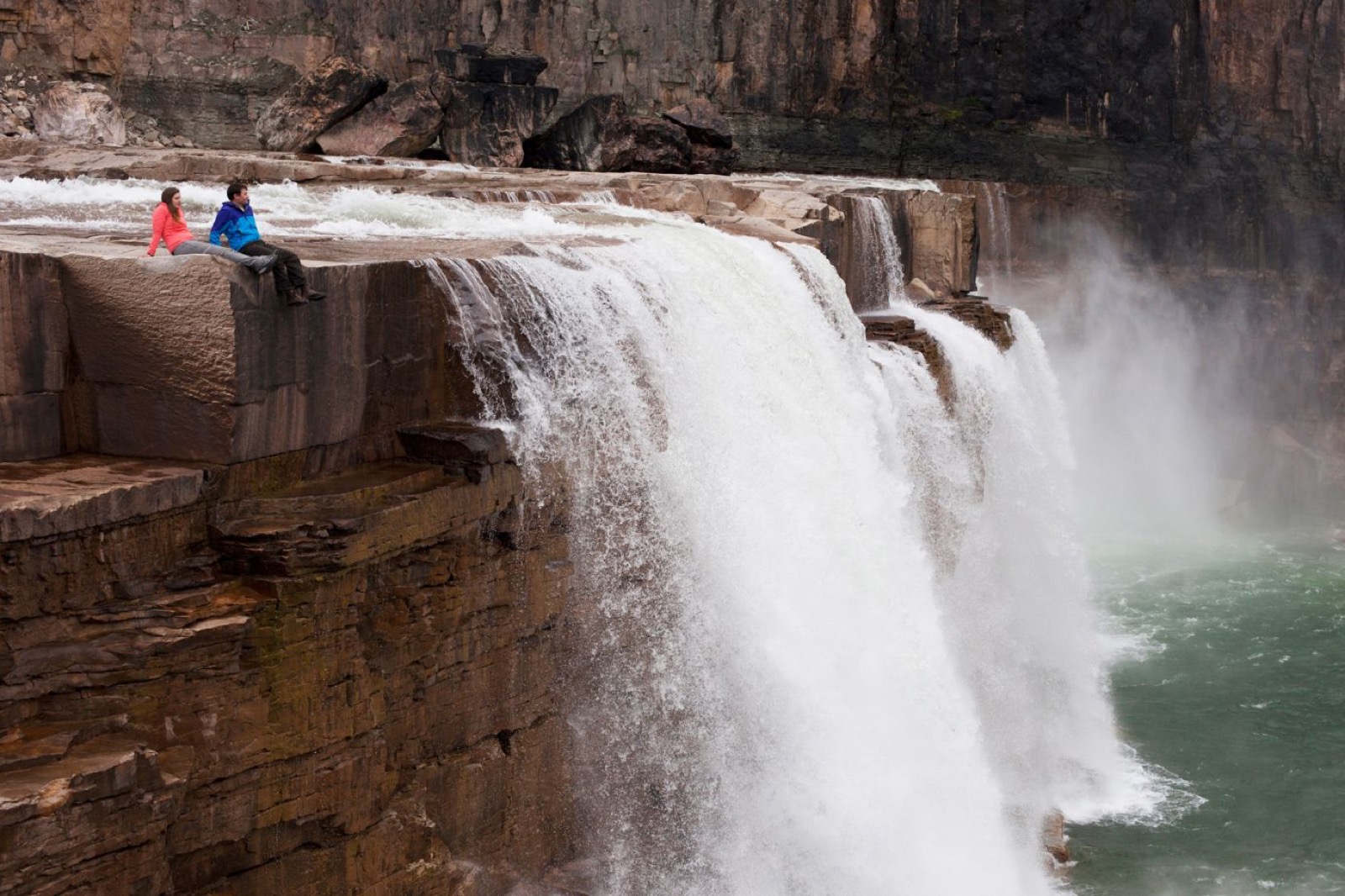 Attribution: SpectacularNWT.com[/caption]
Attribution: SpectacularNWT.com[/caption]
Tuktut Nogait National Park, Northwest Territories
Area: 16,340 km2 (6,309 sq mi) Established: 1996 Unique wildlife and vegetation can be found at Tuktut Nogait National Park amongst all of the tundra, rivers and canyons. The park is north of the Arctic Circle and people will be able to see Bluenose West caribou, wolves, grizzly bears, muskoxen, arctic char and raptors. This is where the Bluenose West caribou return every spring for the calves to be born. Visitors can experience a guided Arctic base camp tour while inside this park. There are no campgrounds across the tundra where this tour goes. [caption id=“attachment_7953” align=“aligncenter” width=“1382”]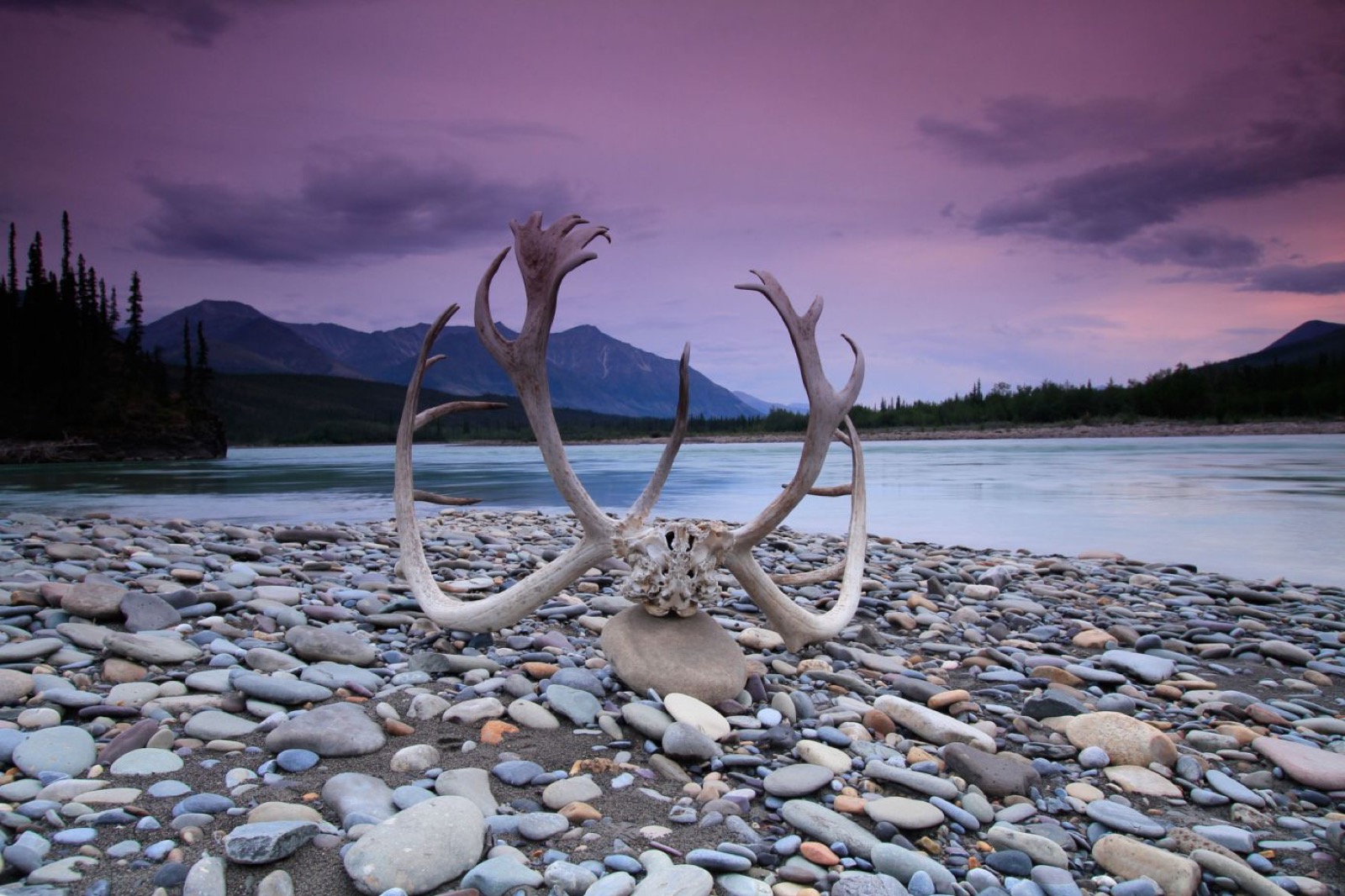 Attribution: SpectacularNWT.com[/caption]
Attribution: SpectacularNWT.com[/caption]
Naats’ihch’oh (Reserve) National Park, Northwest Territories
Area: 4,850 km2 (1,873 sq mi) Established: 2014 The Naats’ihch’oh National Park Reserve is named after the Naats’ihch’oh mountain which is a powerful place for the people of Sahtu. The park is located in the traditional lands of the Shuhtaot’ine and grizzly bears, Dall’s sheep, mountain goats and woodland caribou can be found here. This park is the perfect place to stay and be totally off the grid while hiking the mountains and paddling down the river. <img alt="Wood-Buffalo-NP Pine Lake 98-07-03.jpg" src="/images/blog/Wood-Buffalo-NP_Pine_Lake_98-07-03.jpg"> By Ansgar Walk - photo taken by Ansgar Walk, CC BY-SA 2.5 , https://commons.wikimedia.org/w/index.php?curid=602146
Wood Buffalo Alberta National Park, Northwest Territories
Area: 44,807 km2 (17,300 sq mi) Established: 1922 Wood Buffalo National Park is Canada’s largest park as well as one of the largest parks in the world. This park was established in 1922 in order to protect the remaining bison in the area. The largest beaver dam in the world can also be found at Wood Buffalo National Park. Visitors at the park can walk through the Salt Plains, swim in a sinkhole and see the Northern Lights. <img alt="granite and scree above the Owl River" src="https://c3.staticflickr.com/9/8205/8234002466_752af01db9_b.jpg">
Auyuittuq National Park, Nunavut
Area: 19,089 km2 (7,370 sq mi) Established: 2001 There are granite peaks and glaciers that tower over valleys and fiords in the Auyuittuq National Park. The area is covered by the Penny Ice Cap so only 15% of the park has wildlife. Many adventurous people traverse the Akshayuk Pass which is a natural corridor that goes through enormous rocks. Thor Peak is one of the vertical walls that many mountain climbers attempt to climb in the area. <img alt="Scylla-and-Charbydis.jpg" src="/images/blog/1200px-Scylla-and-Charbydis.jpg"> By Paul Gierszewski - Own work, CC BY-SA 3.0 , https://commons.wikimedia.org/w/index.php?curid=16489400
Quttinirpaaq National Park, Nunavut
Area: 37,775 km2 (14,585 sq mi) Established: 2001 Inside Quttinirpaaq National Park there are massive glaciers that go into wild rivers and ice caps topping the black peaks. People can see the camps of the ancient people as well as the shelters of the explorers. The park is very remote and not many people travel to this park to explore. There is a tour that people can take so that they can experience this portion of the Top of the World. <img alt="Speed Bump is a Pingo" src="https://c5.staticflickr.com/9/8434/7868615828_57f63b1e15_b.jpg">
Sirmilik National Park, Nunavut
Area: 22,200 km2 (8,571 sq mi) Established: 2001 Visitors enjoy the experience of paddling along with the seals and floating ice while in the Sirmilik National Park. People can also ski, hike and snowmobile across the land as they are exploring. There are many polar bears, ringed seals, walruses, narwhals and beluga whales to see while visiting the park. This park is easily accessible and many people take advantage of the tours across the frozen seas. <img alt="Qarmaq relicts 1996-07-29.jpg" src="/images/blog/1200px-Qarmaq_relicts_1996-07-29.jpg"> By Ansgar Walk - photo taken by Ansgar Walk, CC BY-SA 2.5 , https://commons.wikimedia.org/w/index.php?curid=631576
Ukkusiksalik National Park, Nunavut
Area: 20,885 km2 (8,064 sq mi) Established: 2003 The Ukkusiksalik National Park has rolling hills and tundra that is filled with polar bears, grizzly bears, Arctic wolves and caribou. There are many spots with archeological remnants of past cultures that people can see. Visitors can paddle through the sea amongst beluga whales and seals or snowmobile across the frozen sea. People can also see the remnants of a Hudson’s Bay Company trading post. <img alt="Roaming Peary Caribou" src="/images/blog/15196224978_2189bf68de_b.jpg">
Qausuittuq National Park, Nunavut
Area: 11,000 km2 (4,247 sq mi) Established: 2015 The Quasuittuq National Park is located in Canada’s Arctic Archipelago. In Inuktitut, Quasuittuq means place where the sun doesn’t rise which is perfect because the sun doesn’t rise here for several months of the year. This park has not been completely established yet, because the Inuit Impact and Benefit Agreement has not been finalized. There is a cairn on Helena Island within the Quasuittug National Park that was built in 1853 by a Bristish Naval Franklin search expedition. The Polar Bear Pass National Wildlife Area is close by to the park as well. [mappress mapid=“126”] Photos provided by some incredible photographers from all over the world who open their photo licences to CC 2.0.
